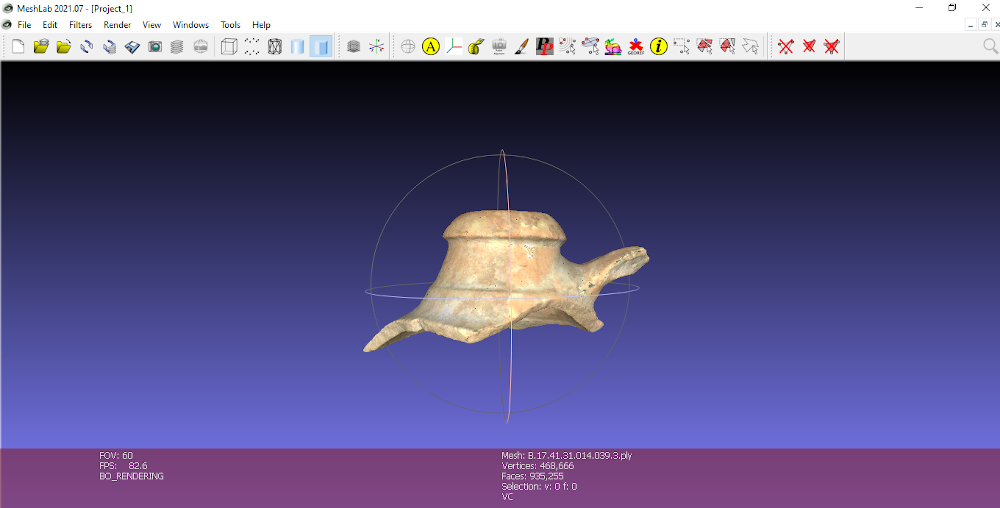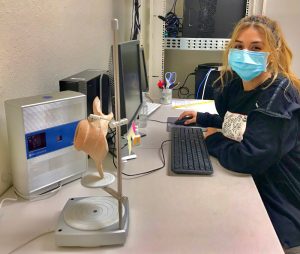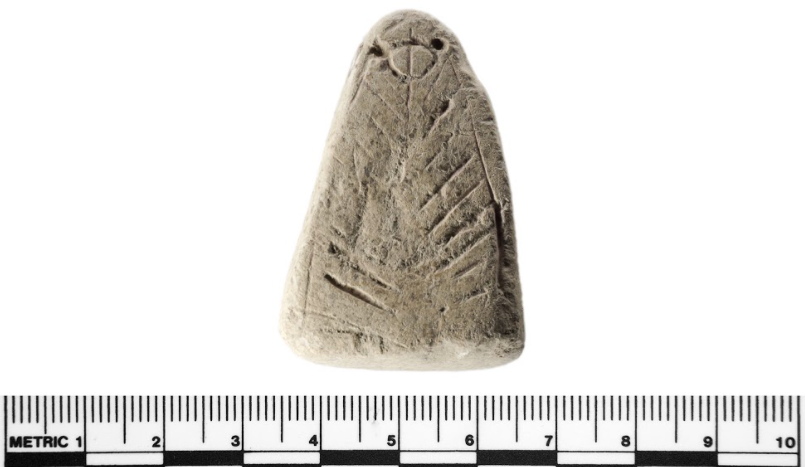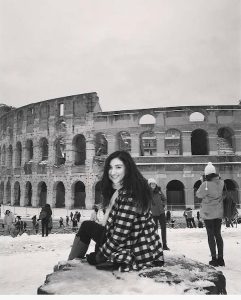
Khirbet al-Balu’a 2021 Study Season: Pottery and Figurines
I would like to thank the Shirlee Meyers-G. Ernest Wright Scholarship donors and ASOR for providing me with an amazing opportunity to participate in the 2021 study season at La Sierra University. I assisted in processing loaned, diagnostic ceramic samples for publication of 2012-2019 excavation seasons at Khirbet al-Balu’a. I organized and sorted these samples according to occupational phases utilizing the data collected from the loci. Relying on my skills with Next Engine’s software ScanStudio and Meshlab, I was able to create plates for all of these diagnostic samples to prepare them for the Khirbet al-Balu’a publication. The next step will be creating a ceramic seriation for Central Jordan by applying C14 data.


Scanning set up at La Sierra University.
I was also able to conduct research on the figurines found in the main occupational strata at Khirbet al Balu’a as part of a class on household archaeology. I discussed the figurines’ purposes while providing contextual evidence from Iron Age Khirbet al-Balu’a. I read articles in household archaeology methodology and theory and applied what I’ve learned to the archaeological dataset from Khirbet al-Balu’a. A total of 19 figurines were found at Khirbet al-Balu’a during the 2012 to 2019 excavations. While both anthropomorphic and zoomorphic figurines were found, the majority were zoomorphic (13 figurines). This assumes that the demonstrated figures are animals since many are difficult to interpret due to their poor condition.
When analyzing figurines there are 3 main categories: zoomorphic, anthropomorphic and theriomorphic. Zoomorphic figurines resemble an animal, anthropomorphic figurines resemble humans, and theriomorphic figurines are thought to have depicted gods in animal form. In the ancient near east, theriomorphic figurine can be either an animal with humanistic traits that identify with gods or as part animal and human. Phase 2 at Balu’a did not have any female depictions, despite female figurines being the most common anthropomorphic archetype. Female figurines are often correlated to fertility, and were possibly used to enhance the chances of bearing children or giving birth safely. Most of Balu’a figurines are zoomorphic, and the ones from the Iron Age II house are identified as bovine, birds, and horses. Two of the figurines were ceramic and another two were made of plaster and clay. For example, B190010 was a plaster, conical-shaped zoomorphic figurine with incised eyes, beak, feathers and wings. There is a line design originating from the center of the figure. It is thought to be a bird of some sort owl or a hawk. This figurine was a part of the Phase 2 post-collapse rubble layer located in room A4. While learning about these figurines I couldn’t help but feel connected to the occupants of the Iron Age II house. I wondered what I would leave behind in my home long after I am gone for others to find. Figurines are initially interpreted as cultic objects. This is my favorite theory because it shows that ancient peoples needed something to believe in when life got too unpredictable and difficult. There is an unspoken beauty and a sense of humanity to the concept of hope thriving through these figurines during what may have been a desperate time.


During the summer of 2021, ASOR supported 27 undergraduate and graduate students through the Summer Stipend Program. These students undertook non-fieldwork archaeological research projects led by ASOR-affiliated project directors. They also took part in monthly cohort group meetings hosted via zoom. Read a summary of these cohort meetings here.
Stay tuned for more updates from the 2021 Summer Stipend recipients!
American Society of Overseas Research
The James F. Strange Center
209 Commerce Street
Alexandria, VA 22314
E-mail: info@asor.org
© 2023 ASOR
All rights reserved.
Images licensed under a Creative Commons Attribution-NonCommercial-ShareAlike 4.0 International License
COVID-19 Update: Please consider making payments or gifts on our secure Online Portal. Please e-mail info@asor.org if you have questions or need help.